Real Estate Software Development: a Detailed Overview
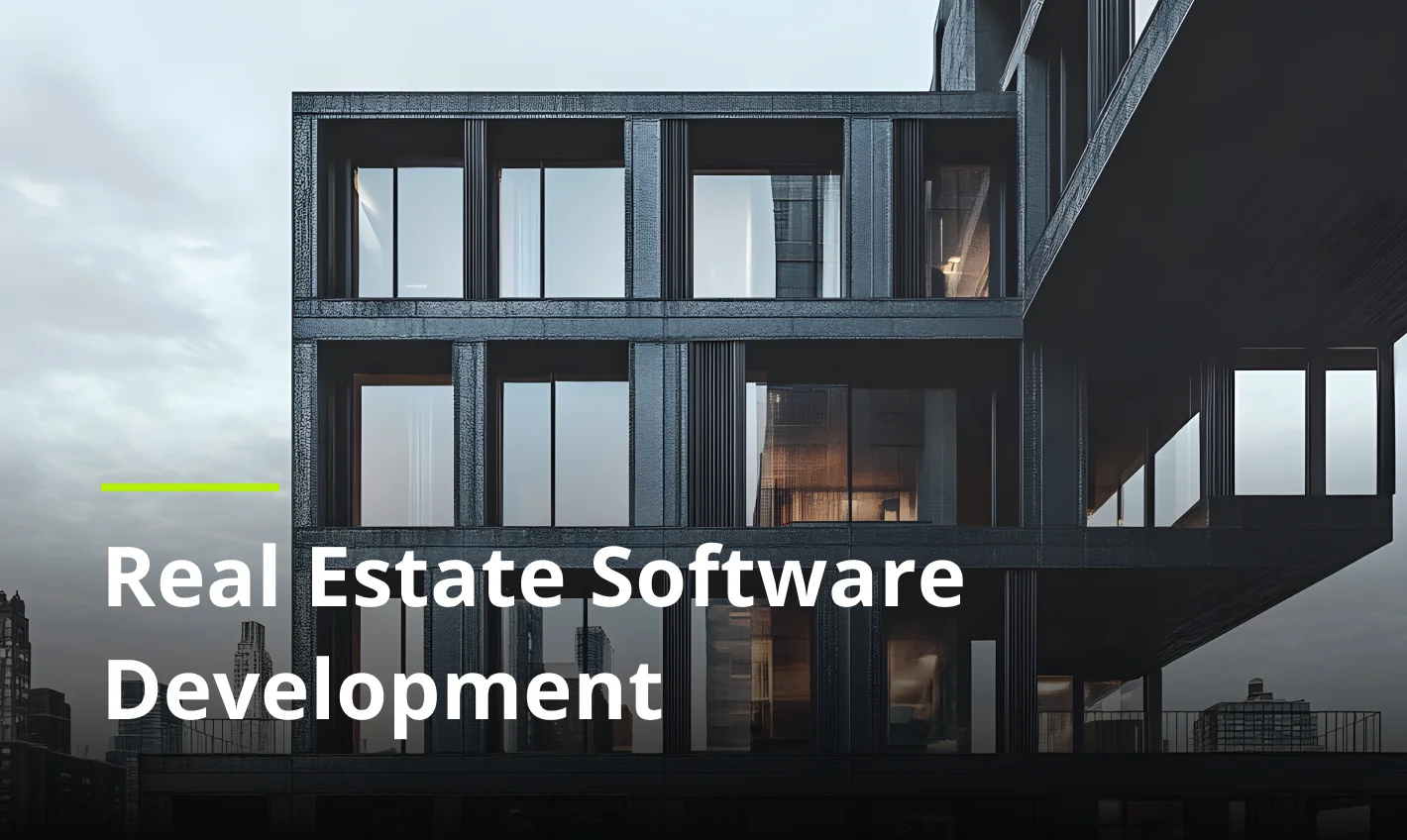
The choice in favor of real estate software development is one of the most profitable decisions business owners can make at this point in time as the industry is growing exponentially, welcoming advancements in technology. These innovations make the process of managing property as easy as ever while maintaining a steady flow of customers and revenue.
At first glance, software development for real estate can seem complicated and intimidating to dip your toes in, but in reality the technology has stepped so far that wrapping your head around is not a headache. We are here to tell you everything you have to know about this kind of engineering and how to turn it into your advantage.
In our guide to realty software development, you will learn what kinds of solutions exist, what their estimated prices are, how you can reap the benefits and leverage current trends. By the end of this read, there won’t be any stone left unturned in regard to the topic of property development, so let’s get straight into it.
What is real estate software development?
The creation of your own software for the real estate industry entails gathering a trustworthy and competent development team that can handle collecting and analyzing your requirements, designing with the end-users in mind, writing code using best practices, testing the solution to identify and eliminate bugs and, finally, release the software to the world.
Real estate development software can become your bread and butter to take a competitive stance in the market by utilizing advanced technologies and catering to the demands of the audience. Nowadays, the modernization of such complex sectors has enough capabilities to streamline workflows and automate routine processes, enabling you to focus on more prioritized tasks and keep your business afloat.
Spanning across a myriad of work operations, property solutions can cover your needs with a customized approach that fits your corporation like a glove and relieves the stress off of your shoulders. The areas where software creation can optimize procedures and facilitate scalable growth can surprise even the most seasoned professionals, and we will touch on this a little later.
There is no time to waste when it comes to developing real estate software as the market is seeing unprecedented evolution. In fact, as a recent study by The Research Business Company demonstrates, the real estate software market is worth almost $12 billion as of 2024, with projections of a CAGR of 10% by the year 2028.
It’s not hard to see why this niche has seen such an impact and why the product building services are as popular as ever. If this topic is still a mystery to you, let’s delve deeper into all of the nuances associated with technology-based real estate solutions.
Types of software development for real estate
Whichever type of property creation you choose is going to reflect on what kind of real estate software development services you have to opt for, so you need to come in prepared with knowledge of the distinct kinds of uplifting your business and which suit your objectives the most. Of course, it is totally normal to want to create several types of software or choose in favor of one comprehensive and all-encompassing solution, yet we still have to define and separate them by type.
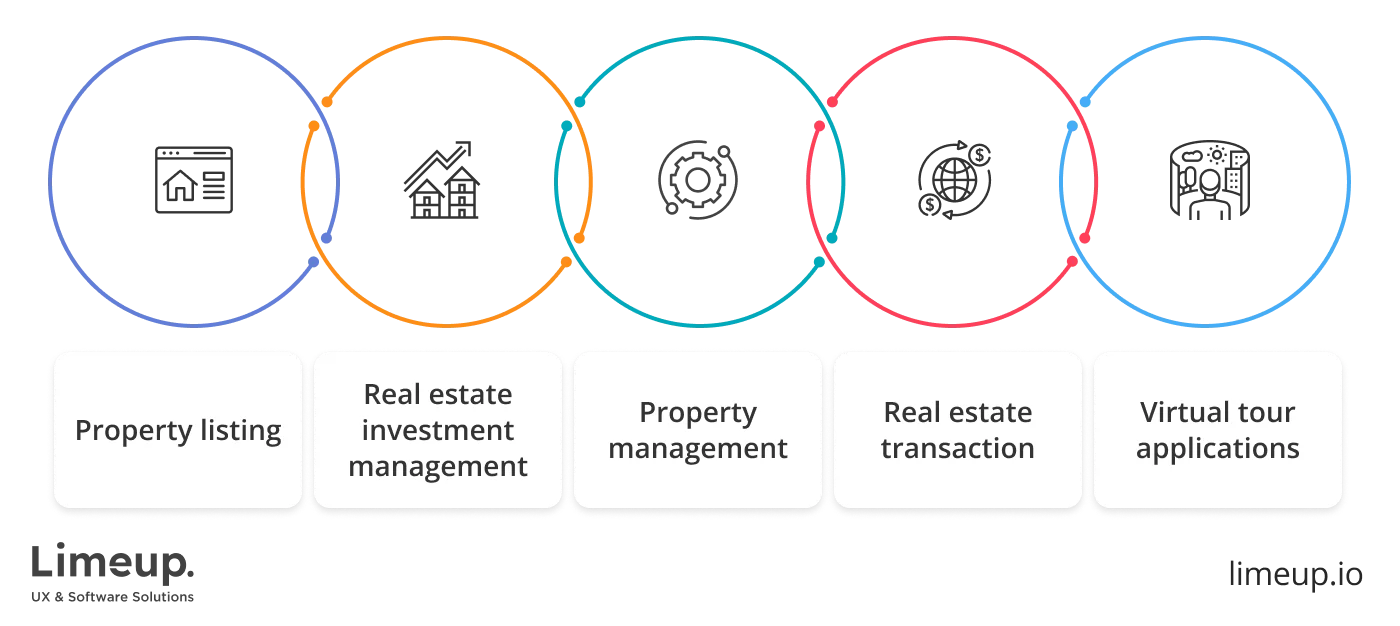
Below we want to highlight the five most commonly requested residential and commercial real estate development software that is going to help you define what exactly you are looking for and how it is properly called to plan for the future effectively.
Property listing development
A robust property listing software, while not as complex in terms of development, has to be comprehensive and cover all of the aspects that users might be interested in. First of all, such software can span across different types like residential, commercial, foreclosure properties and the list goes on with advanced search filters to narrow down the finding process to the smallest details.
It also has to reflect on the audience’s needs so if you are targeting customers, it needs to contain information valuable to them while listing software for landlords and agents it must cover a different set of needs.
Real estate investment management software
The real estate management software development encompasses investment opportunities as well, enabling users to oversee and control their investments with advanced dashboards and analytics reports. Typically, such software is aimed at providing detailed information about the financial state and asset tracking, along with other features, regardless of the composition of the property portfolio and its types.
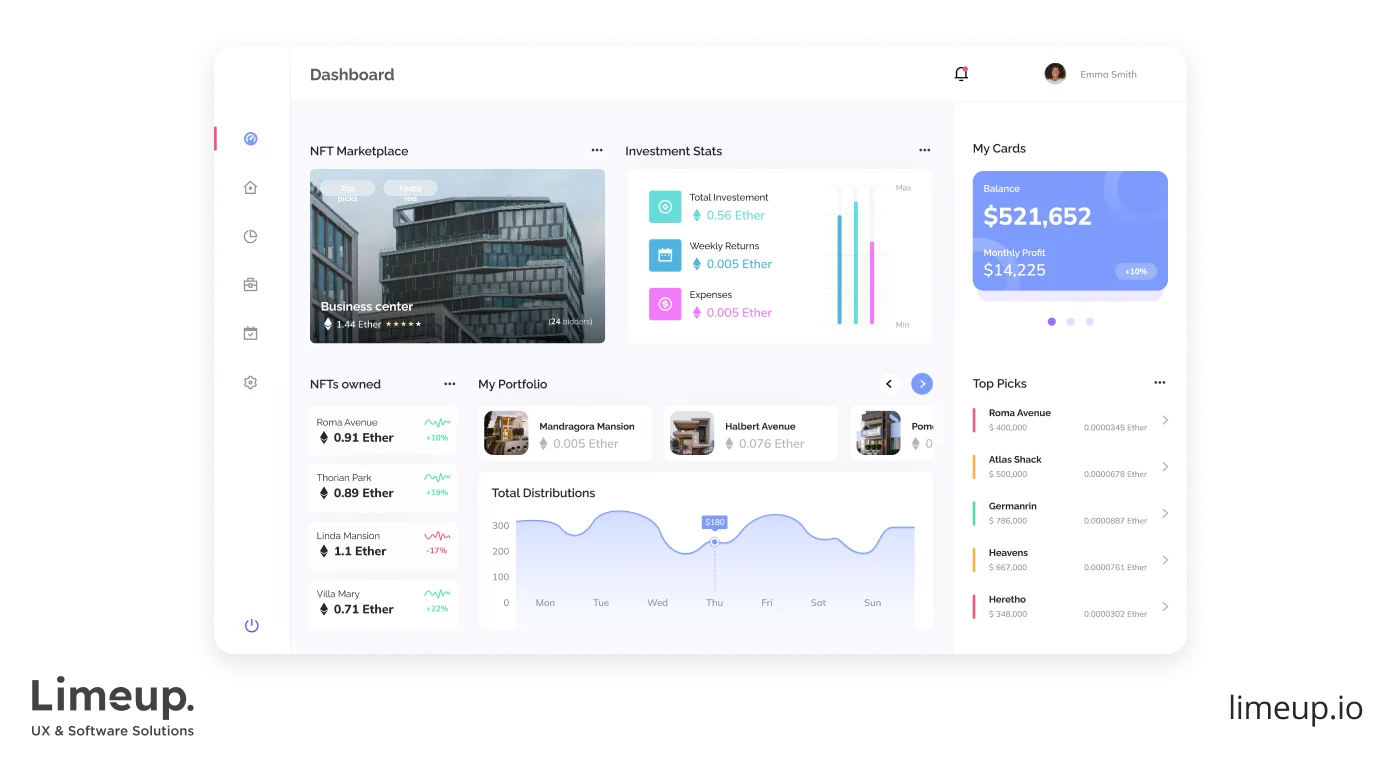
With quantifiable data brought to the table with an investment management solution, entities are improving their decision-making process in real time with analysis of the cash flow and ROI calculations which helps them to navigate the murky waters of real estate management.
Property management software development
Speaking in more broad terms, property management software (PMS) takes accountability for a lot of processes needed to run real estate propositions. The ages of keeping track of your operations are gone with the wind, replaced by comprehensive solutions that centralize record-keeping in one accessible place, holding information like rental data, check-ins and check-outs, billing, report system and much more.
A PMS can bring to the table extensive data about any kind of property, from commercial to residential, and include valuable features such as leasing management, tenant information, requests for building maintenance and even accounting to simplify the usage of different aspects from one software system.
Real estate transaction software programming
One of the overlooked parts of property software development is transaction programming which streamlines the flow of monetary operations such as selling, buying, renting and leasing properties. Creating such a solution from scratch to integrate into your system can yield a lot of benefits for the business, including transaction flow automation, documentation organization, analysis of payment data, etc.
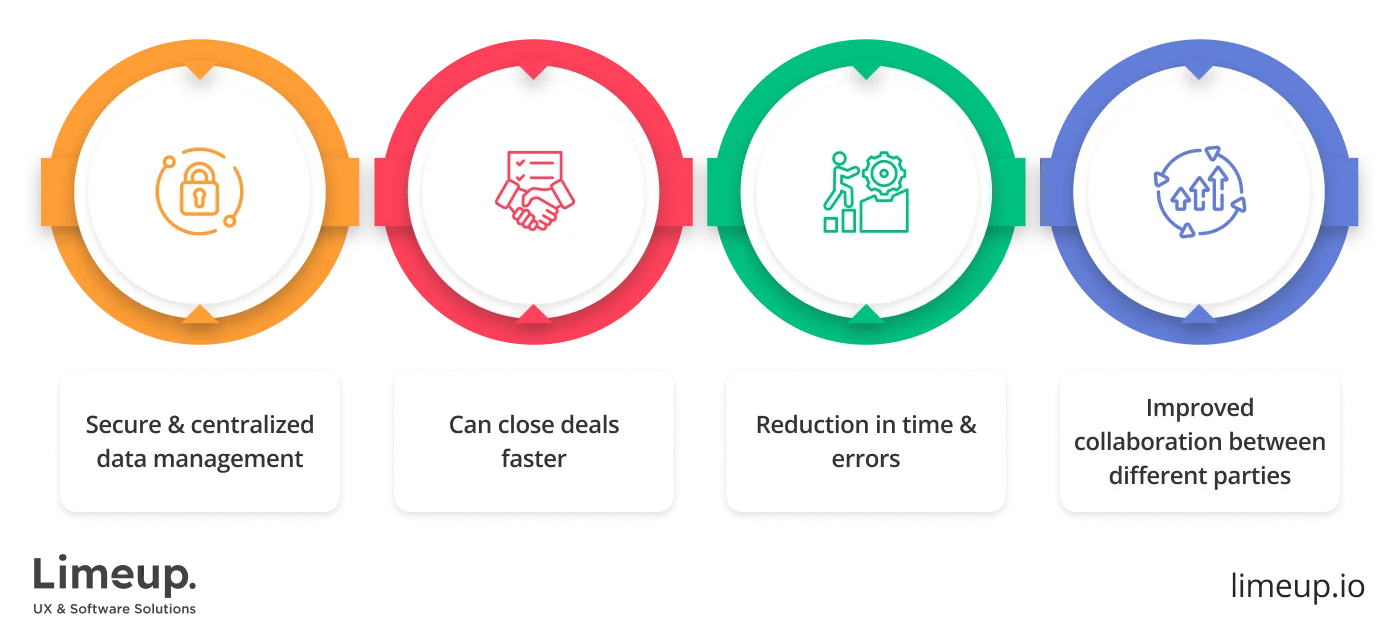
There is a plethora of ready-made transaction management software out there that you can implement into your system, however, building one from the ground up allows for more extensive functionality customization and tailoring features to your specific business needs.
Virtual tour applications creation
3D modeling within the real estate industry has been around for quite some time and has proved its advantageous outcomes for customers and brokers alike. The use of virtual tours has found its place within both modeling existing properties and those which are still under construction to give users a complete feel of the offer and help them make a more insightful decision.
This, undoubtedly, promotes consumer loyalty and strengthens conversion rates while you, as the owner, are not going to have to bite the bullet in terms of costs. Some virtual tour software can even go as far as allowing the viewers to interact with the property by changing the wall colors, picking interior design, walking from room to room and so on.
The cost of building real estate software
The pricing of the software building for the property sector is, unfortunately, not a one-size-fits-all situation since no two projects are completely the same with fluctuations in requirements, deadlines, client’s wishes and so on. Typically, real estate software development companies look at a combination of factors to determine how much you can expect to pay for the entire project implementation.
What we can do is tell you all about how costs are formed and give you some estimates so you can better prepare your budget. Let’s go over the primary aspects that influence the cost the most.

First and foremost, real estate software developers look at the complexity and size of the project, meaning what level of customization is needed, how many features the solution requires, will the design be basic or intricate with a tailor-made approach, etc. Ultimately, the bigger the software, the more it will cost you in the end.
Next is the level of expertise of the development team and what it consists of, since engineers that will work on your solution need to be appropriately qualified to meet your expectations on the first try. Some projects are fine with opting for less experienced specialists where the product is basic or semi-complex; others may necessitate middle and senior-level experts to deliver advanced and customized solutions.
Lastly, an influential factor is how strictly you set the deadlines for the completion of the software because you need to keep in mind that the faster you want the solution delivered, the more resources and time the team will have to allocate to your project. This generally adds up to the price compared to letting the provider establish a more realistic timeline.
With this information in mind we can break down these development factors into a digestible table below using the types of real estate products we discussed previously.
| Type of real estate software | Level of real estate software developer needed | Estimated hours required to finish | Average price range |
| Property listing | Junior experts with mid-level team leads | 600-1000 hrs | $15,000-$35,000 |
| Real estate investment management | A mix of middle and senior experts | 2,000-3,000 hrs | $50,000-$250,000 |
| Property management | Middle experts with senior-level team leads | 1,500-3,000 hrs | $40,000-$100,000 |
| Real estate transaction | Senior-level developers | 2,000-4,000 hrs | $100,000-$350,000 |
| Virtual tour applications | A mix of middle and senior-level exerts | 1,000-2,500 hrs | $30,000-$90,000 |
One aspect you do have control over in terms of budget when you create real estate software is the pricing model you choose. There is a plethora of methods to pay for the software and each can be a better fit than the others, so let’s quickly go over the most popular ones.
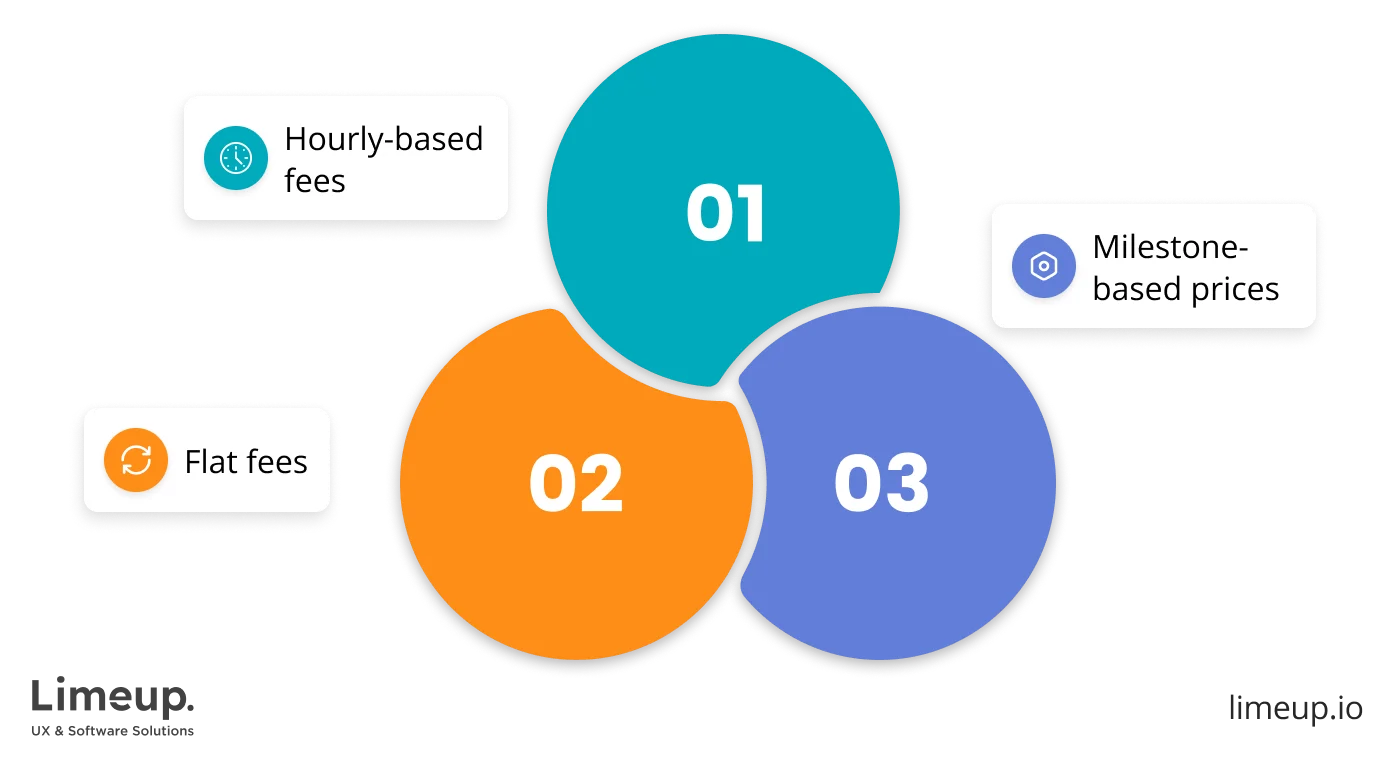
- Hourly-based fees entail paying for each hour the team spends developing your software, with the charges from providers ranging between $25-$300 for an hour. It is a great deal if your project is smaller, like revisions on a certain amount of features, or you expect to have fluctuating requirements during the process.
- Flat fees, or often called fixed-price charges, are when the development vendor calculates the resources and time they need to deliver the final version of the product and extend an overall price for cooperation. This allows you to prepare the exact sum and works great with projects that don’t anticipate a lot of changes.
- Milestone-based prices equate to paying for each stage of the production or when certain goals are met with costs agreed upon between the parties beforehand. This model enables you to pay in parts as you go and for tangible results, not requiring large initial investments.
Advantages of custom real estate software development
Putting your best foot forward in this cut-throat sector can make or break the success of your endeavor, and with professionally-made software as your weapon, you can fight this uphill battle with peace of mind. Technology has stepped so far as to offer you a variety of advantages on your journey and equip your solution with a multitude of benefits.
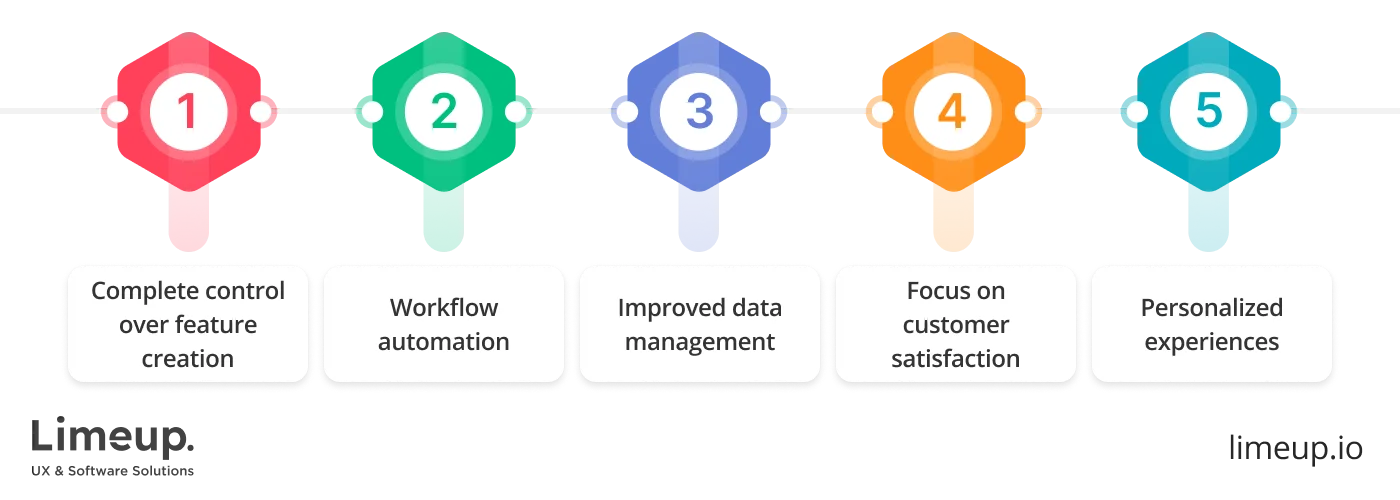
So let’s take a closer look at what they are.
When it comes to the difference between opting for off-the-shelf software, meaning it was built using pre-made templates and code, and real estate software programming that was tailored to your exact requirements, the option that tips the scale is obvious. With the latter, you are in complete control of how your features and functionality are going to turn up, whether they help you streamline your operations and if they solve the pain points of users.
This also applies to the design of your solution, taking the lead in terms of crafting it to your liking, representing you uniquely on the market and making sure it corresponds with your branding needs as well as delivers smooth navigation.
Implementing technologies such as AI and machine learning, which we will talk about in ore detail next, can free up the space for your employees to focus on more essential tasks by leveraging automation of repetitive procedures. The final version of the software can take care of addressing interactions with the client and even handle property management.
Keep in mind that such a technology is also capable of minimizing human error risks and, when assured the quality is up to perfection, operates completely bug and delay-free. Such efficiency puts you higher on the competition list since you are not being dragged down by fixing workflow issues, instead prioritize the value of your software.
Considering the amount of so-called paperwork within the real estate sector it is a need, not a wish, to improve the management of all of the data, including clients’ information, in-company information and so on. Modern technologies allow business owners not only to store the data within one accessible place but also to categorize and manage it with advanced tools to keep track of it.
One of the development options you are capable of prioritizing is creating accounting software as well as real-time tracking and reporting of the information with possibilities of predictive programming to let you stay ahead of the curve.
Qualified real estate software developers are like a Swiss army knife, capable of writing robust code and concentrating on delivering an exceptional user experience simultaneously. After all, you want your solution not only to work well from a technical standpoint but also to cater to the demands of the audience, and their first and foremost need is to have an enjoyable experience using your software.
This can include user-friendly layouts, understandable at first glance tools, precise search filters that help them narrow down what they are looking for and more. This is all designed and implemented at the information architecture stage which, if conducted correctly, can be the driving factor in your customer acquisition and retention rates.
In a culmination of all of these benefits we have discussed so far, we can summarize it in this point — custom software development for the property industry opens the door to leverage your competitive edge and satisfy customers to the point of turning them into loyal fans. Think about it: how many corporations in this market can deliver truly personalized experiences to their audience?
You are capable of achieving such heights by implementing innovative tools that gather and analyze user data to form a tailored approach, catering to customers with personalized offers that they cannot refuse.
Tendencies in real estate software engineering
In order to make profitable software that will be in demand within the audiences and solve actual problems users face, you have to get on the same page with what is currently trending in the market. As the digital world shifts to accommodate new requests, trends in software development go along with them, offering new opportunities to take advantage of.

For the property sector, we analyzed trends that are surging right now and compiled a detailed list of the five influential factors to be aware of and consider implementing them into your project.
VR and AR technology. Virtual and augmented reality have been great little helpers within custom software development for real estate industry for several years now. By leveraging such technology into the property you provide, you enable potential customers to walk a mile in the shoes of living on the premises and get the feel in terms of the dimensions and spaciousness of the estate.
VR devices can be incorporated into the development to essentially create virtual tours of the properties within a 360° simulation which undeniably pushes potential consumers to become clients of your business. In addition to this, AR can further be used to train employees, practicing their skills in a realistic environment.

AI and ML implementation. Artificial intelligence and machine learning tech are the new wave of innovation that seeps through almost every imaginable industry and real estate is not an exception. Everything from personalizing offers to clients to automating repetitive tasks and data management — AI tech can handle and ease the load off of your shoulders.
Choosing in favor of implementing artificial intelligence into your software can help you focus on more important operational tasks while the system handles chatting with clients, modeling renders of property, evaluating market shifts and predicting future changes in the rental and housing niche.
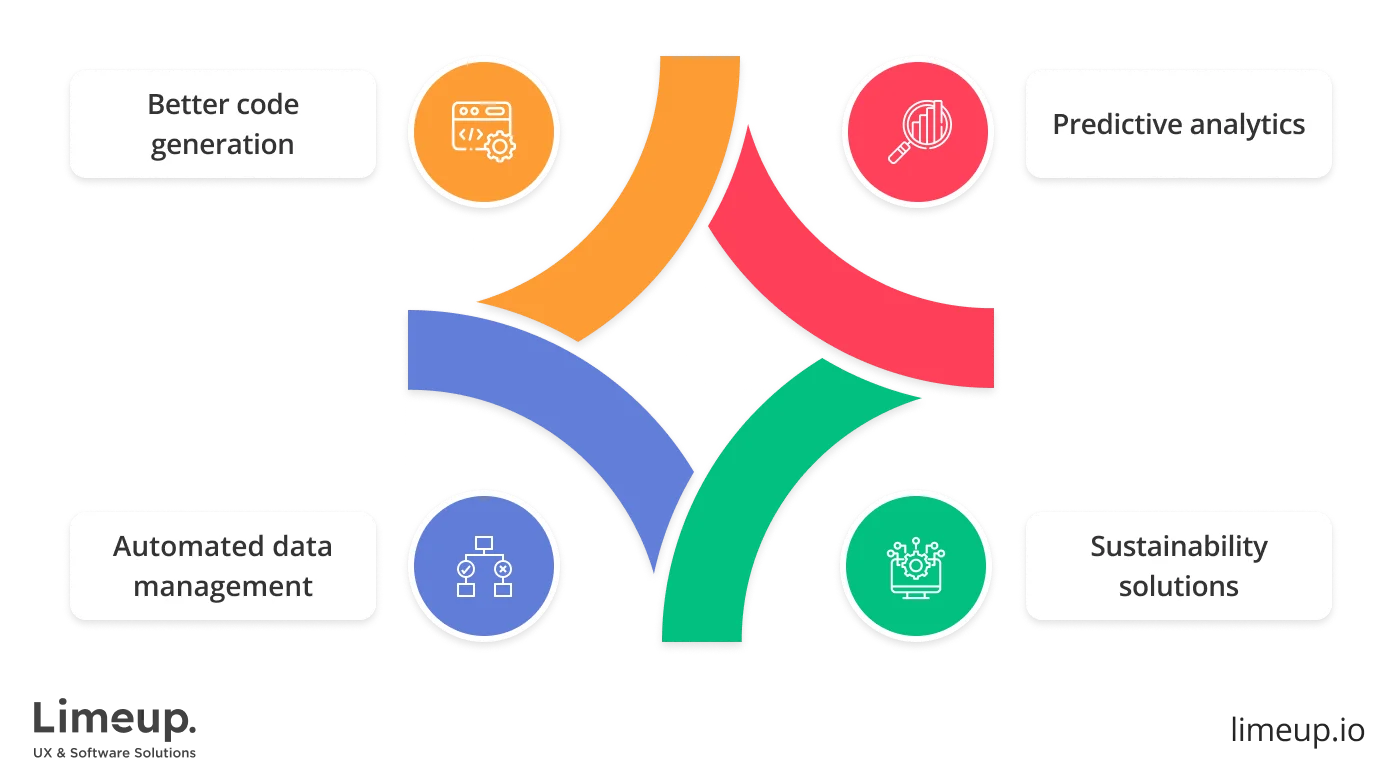
Mobile-first approach. The idea of focusing on developing a mobile application instead of putting emphasis on the comprehensive desktop website creation is not unfounded since by looking at the research provided by Statista, we know that 60% of global traffic comes from mobile devices in 2024. Of course, this does not mean you need to write off website building entirely, but more so focus on mobile responsiveness and web apps.
Your software has to perform equally well regardless of the device the user utilizes to scrutinize what you have to offer and this includes fast loading times, responsive layouts, etc., to increase your chances of solidifying a deal.
Blockchain integration. If you want to build real estate software that will keep its finger on the pulse for modern demands in terms of security and efficiency, you should definitely look in the direction of integrating blockchain into the development process. With the decentralized nature of blockchain, the chances of fraud and data breaches come to a minimum.
Into the bargain, smart contracting has been making waves in the property industry as it allows to sign agreements with no middleman or additional costs. The tokenization of real estate is also on the rise, promising bigger liquidity and opening the doors for investors from every corner of the globe to participate in trading assets.
Digital twins. Similar to the virtual and augmented reality tech, the digital twins approach entails a photorealistic and immersive 3D modeling of the property with a particular angle of simulating real-world scenarios. Such technology could be utilized in a multiplicity of use cases, for example, simulating environmental events like earthquakes to see how the building withstands them or training for fire escape situations.
The core principle of the digital twins approach is based on the use of sensors and IoT data to expand the understanding of the client of vital parts within the building, such as its heating, ventilation systems and so on.
In summary of realty software development
The net of possibilities that is accessible to property owners and real estate businesses is hard to deny, especially considering the vast transformation of this niche from a millennia ago to the present day. The emergence of innovative technologies that streamline complicated processes and automate daily tasks while focusing on delivering exceptional user experience dominates the market which simultaneously draws competitive lines.
Partnering with a reliable real estate software development company, you are capable of transforming even the faintest ideas into reality, leveraging professional expertise and riding the waves of trends. Within our guide, you have learned the different types of development for real estate, what they mean, how much they cost to prepare your budget and more.
Equipped with insights into the benefits you can reap and how to maximize your efforts by playing into current market demands, there is nothing stopping you from breaking into the scene with a worthwhile and fully functional solution.
As the industry growth and new possibilities come along, it is the right time to gather a team of competent real estate software consultants and step into the battle that will transform your business and put you on the map along with some of the most successful corporations, and it’s all within your power.

